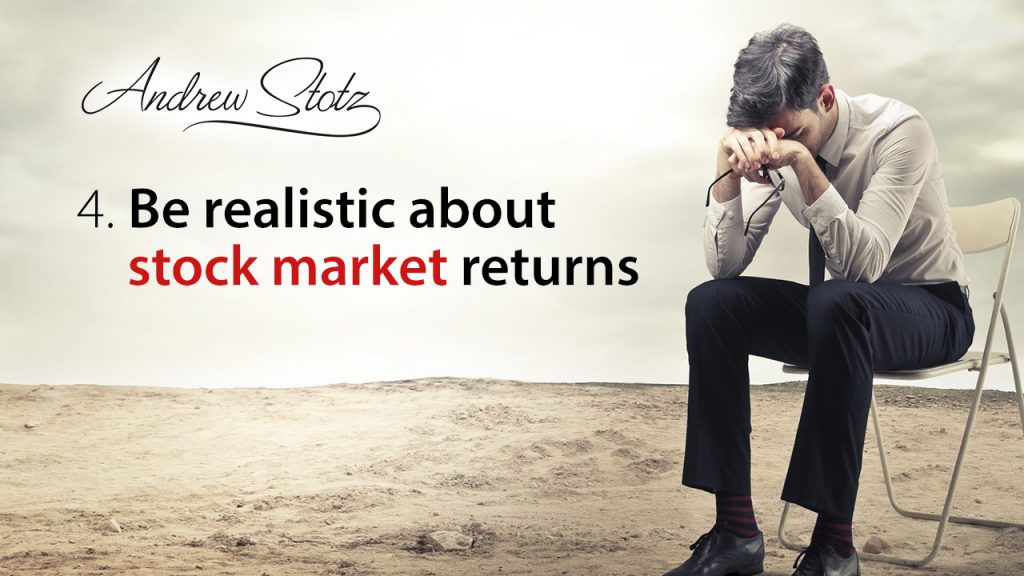Principle 4: Be realistic about stock market returns

[dropcap background=”” color=”” circle=”0″]I[/dropcap]f you’re under the impression that investing in the stock market is your ultimate ticket to the life of the rich and famous, please wake up. Dreaming big is not a problem in the world of finance, but assuming everything will turn out great for your money is. If there is one thing that’s certain to happen during a long-term investment horizon, it is that an investor will—at one point or another—lose.
After all, normal mathematical distribution dictates there will always be winners and losers.
Expecting too high a rate of return on your investments, be they in equities or bonds, is dangerous. You set yourself up for some serious frustration when your portfolio starts to accumulate losses. What Mr. Stotz counsels us to expect is a return of 8%–10% in stocks. With over 20 years of experience in finance, he has seen that even in fast-growing Asian markets, annualized returns of the past decades have been about 10%.
Which is really nothing to be discouraged about, especially comparing those 10% returns to how much our savings accounts and time deposits earn in the bank. We’re lucky to have 1% interest rates from these products. They may be the ultra-safe places for parking one’s money, but investment is not solely about avoiding risk. It’s about boosting the potential of money to grow amid risk. So don’t worry if it seems like all of your friends are already profiting so much from the stock market and you’re not—people naturally “love to talk about their winners but not their losers.”
Just keep in mind that it’s not always rainbows and butterflies in the stock market (or in any investment vehicle for that matter). There will be days when you will lose some, but if you keep your expectations within the benchmark set by Mr. Stotz, it won’t hurt as much. Remember, the market will always bounce back.
Danielle covered the three-day university tour of Andrew Stotz in the Philippines from October 2 to 4, 2014. She will discuss each of Andrew’s 12 investment principles from her perspective. All articles will be posted here on www.andrewstotz.com.


The other thing to remember is we may have had fundamental changes in valuations over the decades (and I suspect they have). Just to over simplify the idea if lets say the market valued the average stock at a PE of 11 and everyone found stocks a wonderful investment. And so more and more people buy stocks and with everyone finding stocks wonderful they keep buying and after awhile the market is valuing the average stock at a PE of 14.
Within the market there is tons of variation those things of course are not nearly that simple, but the idea I think holds. Well if you look back at historical data the returns will include the adjustment of going from a PE of 11 to a PE of 14. Now maybe the new few decades would adjust from PE of 14 to PE of 17 but maybe not. At some point that fundamental re-adjustment will stop.
And therefore future returns would be expected to be lower than historically due to this one factor. Now maybe other factors will increase returns to compensate but if not the historical returns may well provide an overly optimistic view.
And if there is a short term bubble that lets say pushes the PR to 16 while the “fair” long term value is 14, then there will be a negative impact on the returns going forward bringing the PE from 16 to 14. That isn’t necessarily a drop (though it could be) in stock prices, it could just be very slow increases as earning growth slowly pushes PE back to 14.
Interesting comment John. As you correctly point out, no one can predict the future. However, I think history is what is available to do our best to have an idea about where the future is heading. Mark Twain expressed it quite well: “History doesn’t repeat itself, but it does rhyme.”